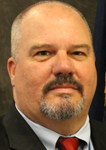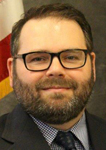Perhaps one of the biggest myths in emergency management is that the public will panic during a crisis. Instead of panicking, the public often pulls together and even puts themselves in harm’s way to help each other. Furthermore, the public, not first responders, are often first on-site during an emergency. The emergency management community must embrace these realties and provide the public with the knowledge and training necessary to save lives and prevent human suffering.
The public has often demonstrated its willingness to help during disaster. The orderly evacuation of the World Trade Center on 9/11, the bystander responses during the 2013 Boston Bombing and 2017 Las Vegas Shooting, the Cajun Navy after Hurricane Florence in 2018, and various citizen-led rescue efforts during these and other disasters are all excellent examples. This effort to empower the public begins with investing in more comprehensive public outreach and education programs – like the Run, Hide, Fight and Stop the Bleed campaigns – as well as moving beyond simple information sharing toward more practical advice on how to respond to real-world situations. If empowered correctly, the public can serve as a force multiplier and another response resource.
Hands-On Training With Two-Way Communication
It is also critical that emergency managers train the public in personal and family preparedness. Again, this should be done through practical training as it is not enough to rely on brochures and more traditional one-way communication methods. New York State has been ahead of the curve in this regard with its Citizen Preparedness training program, which could serve as a model for others to consider.
The program, launched by Governor Andrew Cuomo in 2014 following a series of major disasters in the state, is a two-hour course taught by the New York National Guard in collaboration with state and local emergency management and the American Red Cross. It provides the public with the knowledge necessary to prepare for all types of hazards they may face in their homes or communities. The training goes beyond the traditional disaster preparedness messaging, and includes information about terrorism awareness, how to survive active shooters (i.e., Run, Hide, Fight), fire safety, disaster mental health, among other topics. Attendees are also provided with a “go-bag” that is packed with basic emergency resources that they can keep in their homes. To date, over 250,000 people have received training through this program.
Rapid Detection Through Public Reporting
The public is also a proven partner when it comes to helping prevent or mitigate potential threats. There are numerous examples of the public reporting some type of suspicious activity that resulted in the disruption of a terrorist plot or other potential acts of violence. This again reinforces the notion of outreach programs such as the See Something, Say Something campaign. The concept is also being applied to help prevent school violence through the work of groups such as Sandy Hook Promise, proving that outreach and empowerment can begin at a young age.
Despite the progress to date, the public is still sometimes viewed as a liability instead of a partner; and empowering the public to participate is often an afterthought. That perspective needs to change and emergency management agencies at all levels must embrace the public as part of the solution. In doing so, they should consider partnering with groups like the American Red Cross or other emergency managers to develop public outreach programs that are both educational and empowering. If possible, they should provide free resources like the Citizen’s Preparedness go-bags (see Figure 1), as this has proven to be a great way of increasing the public’s participation in training events, plus it ensures that everyone leaves a little better prepared than when they arrived. Empowering the public takes time, energy, and resources, but it can be done and will pay dividends long into the future.

Roger Parrino
Roger Parrino is the former commissioner of the New York State Division of Homeland Security and Emergency Services (DHSES). He also served as senior counselor to U.S. Department of Homeland Security Secretary Jeh Johnson.
-
Roger Parrinohttps://domesticpreparedness.com/author/roger-parrino

Terry Hastings
Terry Hastings is the senior policy advisor for the New York State Division of Homeland Security and Emergency Services (DHSES) and an adjunct professor for the College of Emergency Preparedness, Homeland Security and Cybersecurity at the State University of New York at Albany. He oversees the DHSES policy and program development unit and a variety of statewide programs and initiatives.
-
Terry Hastingshttps://domesticpreparedness.com/author/terry-hastings
-
Terry Hastingshttps://domesticpreparedness.com/author/terry-hastings
-
Terry Hastingshttps://domesticpreparedness.com/author/terry-hastings
-
Terry Hastingshttps://domesticpreparedness.com/author/terry-hastings






